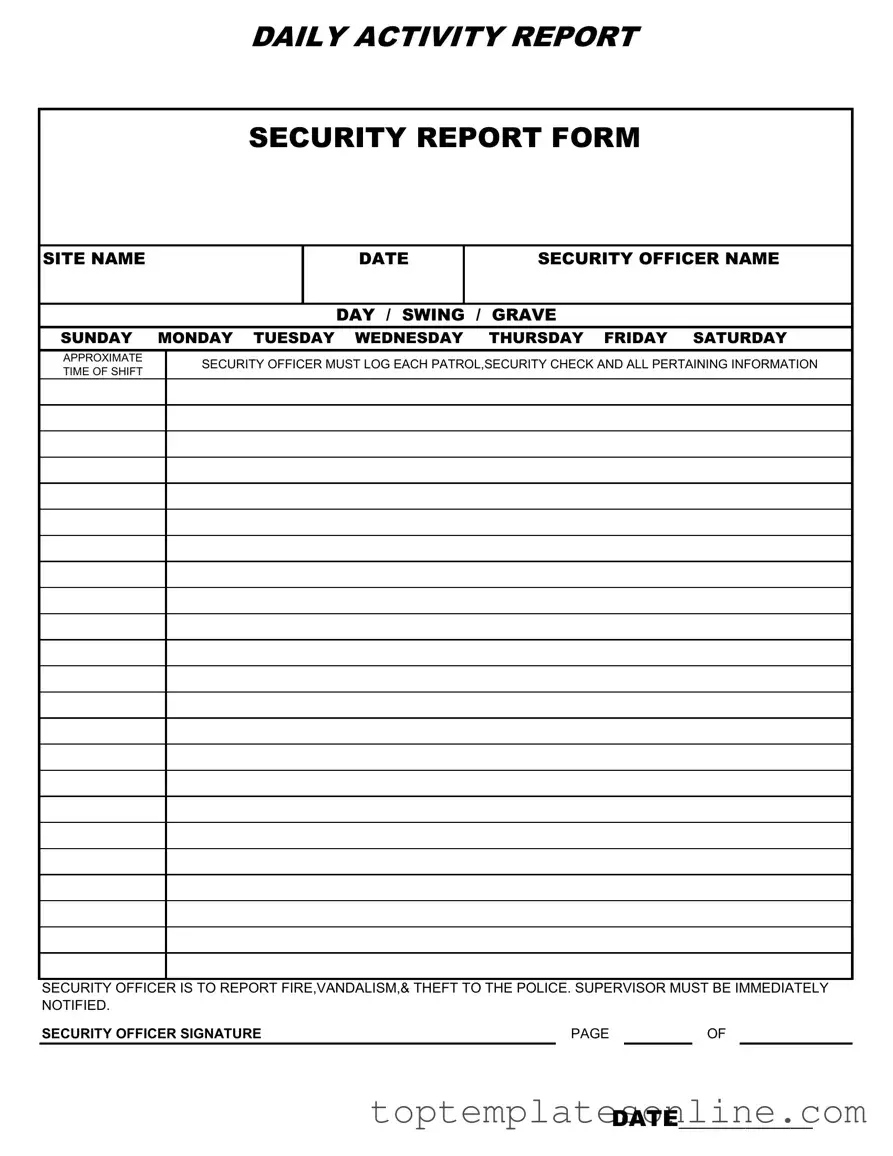Fillable Security Guard Daily Report Sample Form
The Security Guard Daily Report Sample form is a structured document used by security personnel to record daily activities and incidents. This form helps ensure that all relevant information, such as patrols and security checks, is documented accurately. It is essential for maintaining safety and accountability on-site.
Customize Security Guard Daily Report Sample Here
